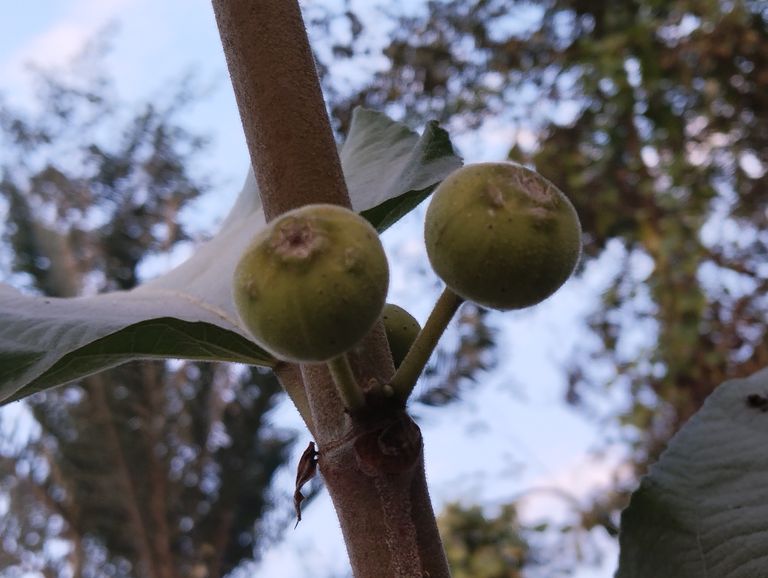
Medicinal Benefits of Fig Ficus Carica.
Figs, scientifically known as Ficus carica, have been revered for their nutritional and medicinal value since ancient times. This small, sweet fruit is packed with vitamins, minerals, and bioactive compounds, making it a powerful natural remedy for various ailments. Below, we explore the health benefits of figs in detail.
- Rich Source of Nutrients
Figs are a treasure trove of essential nutrients. They contain vitamins like vitamin A, B-complex, C, and K, as well as minerals such as potassium, magnesium, calcium, and iron. These nutrients play vital roles in maintaining overall health, strengthening bones, and boosting immunity.
- Improves Digestive Health
Figs are an excellent source of dietary fiber, which helps regulate bowel movements and prevent constipation. The fruit contains enzymes like ficin, which aid in breaking down proteins and improving digestion. Consuming figs regularly can also reduce bloating and other gastrointestinal issues.
- Controls Blood Sugar Levels
The high fiber content in figs slows down sugar absorption in the bloodstream, making them beneficial for managing blood sugar levels. Additionally, fig leaves have been shown to improve insulin sensitivity, making them particularly useful for individuals with type 2 diabetes.
- Promotes Heart Health
Figs are rich in antioxidants like polyphenols and flavonoids, which help reduce oxidative stress and inflammation, key contributors to heart disease. Potassium in figs helps regulate blood pressure, while dietary fiber lowers bad cholesterol (LDL) levels. These combined benefits make figs a heart-friendly food.
- Boosts Bone Health
Figs are a good source of calcium, magnesium, and phosphorus, all of which are crucial for maintaining strong and healthy bones. Regular consumption of figs can help prevent conditions like osteoporosis and improve overall bone density.
- Supports Weight Management
Figs are low in calories but high in fiber, making them a perfect snack for those aiming to lose weight. The fiber content keeps you full for longer periods, reducing overeating and curbing unnecessary cravings.
- Enhances Skin Health
The antioxidants in figs combat free radicals, preventing premature aging and maintaining skin elasticity. Applying fig extracts topically can help treat acne, pigmentation, and skin dryness. The fruit also promotes healthy, glowing skin when consumed regularly.
- Strengthens Immune System
The natural sugars, vitamins, and antioxidants in figs enhance immune function by fighting off infections and boosting the body's defense mechanisms. This makes figs particularly beneficial during flu seasons or periods of low immunity.
- Relieves Respiratory Disorders
Figs have been traditionally used to alleviate respiratory conditions like asthma, bronchitis, and sore throats. Their soothing properties help reduce inflammation in the respiratory tract, making breathing easier.
- Supports Reproductive Health
Figs have long been associated with fertility and reproductive health. They are rich in iron, which improves blood circulation, and their nutrient profile supports hormonal balance. In traditional medicine, figs are often used to enhance sexual vitality.
- Detoxifies the Body
Figs help detoxify the body by promoting liver function and eliminating toxins. Their high fiber content also aids in cleansing the colon, reducing the risk of colon cancer and other digestive issues.
How to Use Figs for Medicinal Benefits
- Raw or Dried Figs: Consume them as a snack or add them to salads, smoothies, or desserts.
- Fig Tea: Boil fresh or dried figs in water and drink the infusion to relieve coughs and improve digestion.
- Fig Paste: Apply fig paste to wounds or skin irritations for its soothing and healing effects.
- Fig Leaves: Brew fig leaves as tea or use them in cooking for added medicinal benefits.
Precautions and Side Effects
While figs are generally safe for consumption, excessive intake may lead to:
Allergic Reactions: People allergic to latex or mulberries might also react to figs.
Diarrhea: Due to their high fiber content.
Interference with Medications: Consult a doctor if you’re taking blood thinners or diabetes medication.
Figs are nature's gift to health and wellness. Their rich nutrient profile, combined with numerous medicinal properties, makes them a versatile addition to any diet. Whether consumed fresh, dried, or as part of a recipe, figs can significantly improve your overall well-being. Including figs in your daily routine can help you harness their full potential as a natural remedy for various ailments.


The Mysterious Flower of the Fig Tree: A Fascinating Tale
The fig tree, known for its delicious and nutritious fruit, has intrigued humans for centuries. However, a curious mystery surrounds it: the fig’s flower is rarely, if ever, seen. This has led to many myths and misconceptions, especially in cultures where the phrase “fig’s flower” (such as "ডুমুরের ফুল" in Bengali) symbolizes rarity or something unseen. In this blog, we unravel the enigma of the fig flower and explore its significance in nature, culture, and science.
The Hidden Beauty of the Fig Flower
Unlike most plants, the fig tree (Ficus species) doesn’t produce visible flowers. Instead, its flowers are concealed inside a unique structure called a syconium. The syconium is a bulbous, hollow receptacle lined with tiny flowers on the inner surface. What we commonly refer to as the “fig fruit” is, in fact, an inverted flower cluster!
These hidden flowers play a vital role in the fig’s reproduction process. Depending on the species, these flowers are either male, female, or both, ensuring pollination occurs in a confined, self-contained system. This extraordinary feature sets the fig apart from most other plants.
Pollination: A Symbiotic Marvel
The fig tree relies on a specialized relationship with fig wasps for pollination. This mutually beneficial arrangement is one of nature’s most fascinating partnerships. Female fig wasps enter the syconium through a small opening called the ostiole, carrying pollen from another fig. As they navigate the inner flower cluster, they pollinate the female flowers, ensuring the development of seeds and fruit.
The fig, in turn, provides a safe environment and nourishment for the wasps to lay their eggs. This symbiosis highlights the intricate interdependence that exists in the natural world, making the fig tree a marvel of evolutionary adaptation.
Cultural Significance of the Fig Flower
In many cultures, the unseen fig flower symbolizes mystery, rarity, or the unattainable. In Bengali culture, the phrase "ডুমুরের ফুল" (dumurer phool) is often used to describe something extremely rare or elusive. This metaphor reflects the hidden nature of the fig’s flowers, which are virtually invisible to the naked eye.
Similarly, the fig tree holds spiritual and symbolic significance in various traditions. In Buddhism, the Bodhi tree under which Siddhartha Gautama attained enlightenment is a type of fig tree (Ficus religiosa). In ancient mythology, the fig tree was often associated with fertility, wisdom, and prosperity.
Ecological Importance of Fig Trees
Fig trees play a crucial role in maintaining ecological balance. They are keystone species in many ecosystems, supporting a wide variety of wildlife. The fruit serves as a vital food source for birds, bats, monkeys, and other animals, especially during times when other food sources are scarce.
The fig-wasp pollination system also highlights the importance of biodiversity. Protecting fig trees ensures the survival of these wasps, which, in turn, supports broader ecological networks.
The Modern-Day Relevance of Fig Trees
In the face of climate change and deforestation, the fig tree’s resilience and ecological significance are more important than ever. Researchers are studying fig trees to understand their potential in reforestation projects and their ability to thrive in challenging environments.
Additionally, figs are valued for their health benefits. Rich in fiber, vitamins, and minerals, figs are a staple in many diets and are used in various culinary traditions worldwide.
The fig’s hidden flower is a testament to nature’s ingenuity and mystery. While its invisibility has inspired myths and metaphors, the fig flower is a vital part of a complex ecological and evolutionary system. Understanding this hidden marvel deepens our appreciation for the fig tree’s unique biology and its indispensable role in nature.
As we continue to learn from and about the fig tree, it serves as a reminder of the wonders hidden in plain sight and the intricate interconnections that sustain life on Earth.